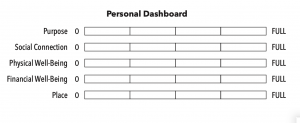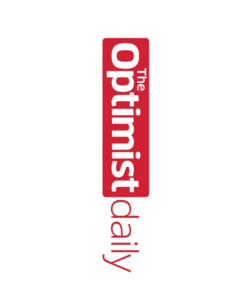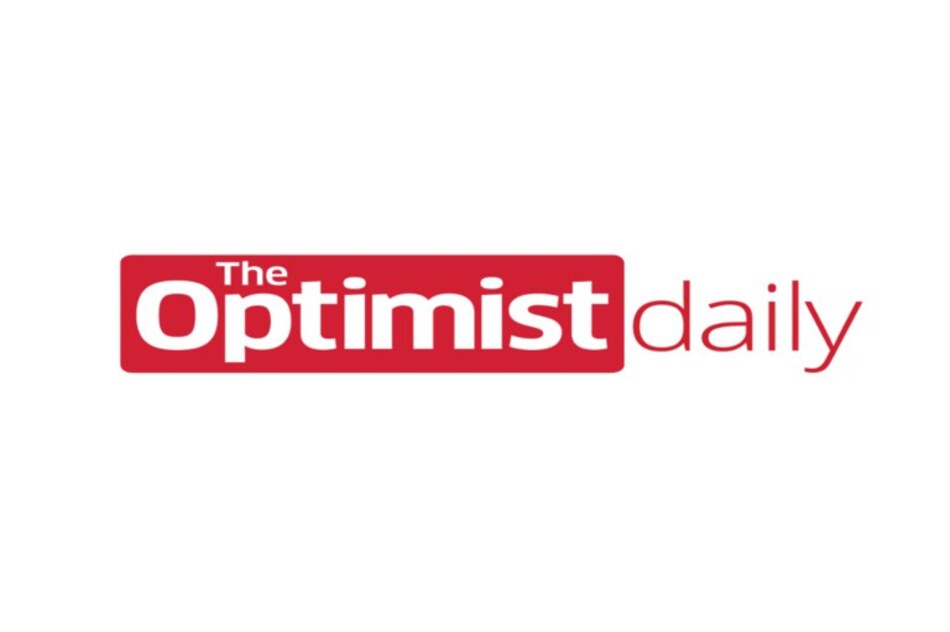“The path from dreams to success does exist. May you have the vision to find it, the courage to get on to it, and the perseverance to follow it.” – Kalpana Chawla
Did you know that the average human lifespan has increased by over 20 years in the last century alone? Humans are living longer, and the traditional expectation that we will work for 40 years and ease our way into retirement doesn’t fit with the evolving modern lifestyle. As we rethink how we age, place plays a huge role in this transition.
Place refers to where, how, and with whom we live, and it has a profound impact on our health and happiness. Ryan Frederick’s Right Place, Right Time examines how we can each create our own personal Blue Zone to foster joy, purpose, and longevity by choosing the best place to call home during the second half of life.
We are excited to bring you a peek inside this thoughtful and engaging book. Read on!
Chapter 2: EVALUATING WHETHER YOU ARE IN THE RIGHT PLACE
In my consulting practice, I advise leaders on strategies to grow their organizations. The first step is to gain clarity on the state of the organization. We combine data analysis with in-depth discussion to understand where the organization is in its journey. We can’t provide good direction on where to go unless we know where we are at the start. This approach takes effort.
The same process is required for individuals to sort out their best path for healthy aging. The initial step is to reflect on where you are. This is not an exact science. You are likely to rely more on intuition than data, but be a hard and honest evaluator. If you don’t make the effort to understand the gap between where you are and where you would like to be, you are less likely to make a change for the better.
Step #1. Create a Personal Healthy Aging Dashboard
The first step is to determine where you stand in key areas of healthy aging: purpose, social connection, physical well-being, financial well-being, and place.
Personal Dashboard

Some questions to consider include:
- For Purpose
- Do you have something that gives you meaning each day?
Examples can include family, work, volunteering, and faith.
- How does your sense of purpose in these areas prompt you
to make a difference beyond yourself?
- Do you have something that gives you meaning each day?
- For Social Connection
- Do you have a set of close relationships with persons with whom you can share important things?
- Do these relationships extend beyond a spouse or partner?
- Do you have family living physically close to you?
- Do you have casual friends that you simply enjoy spending time with?
- Do you have friends that live close by, and do you see them regularly (at least once per week) in person?
- Do you know your neighbors? If so, do you see them, even if in passing, at least once a week?
- Do you find yourself physically isolated to the point where you rarely see people?
- Do you participate in any activities that routinely bring you together with a set of people?
- Do you have a set of close relationships with persons with whom you can share important things?
- For Physical Well-Being:
- Are you physically active in some fashion at least two times per week?
- Do you do a mix of aerobic, interval, and resistance training?
- Do you exercise with friends?
- Do you maintain a healthy diet that includes a mix of whole grains, fruit, vegetables, and fish?
- Do you smoke? Is your alcohol consumption moderate or less, such as one drink per day for women and no more than two drinks per day for men?
- Are you able to get enough quality sleep for your age and stage in life?
- Are you physically active in some fashion at least two times per week?
- For Financial Well-Being:
- Do you have a financial plan for a long life, as long as 100 years, that includes goals and has sensitivities to changes in annual income, expenditures and investment returns?
- Do you utilize third-party help, such as a financial advisor or skilled friend, to assess the quality of your plan?
- Does your income stream compare favorably to expenses?
- Do you have resources, including family, that could help should a need arise beyond your financial means?
- Do you have friends or family that may need financial assistance from you?
- Do you have a financial plan for a long life, as long as 100 years, that includes goals and has sensitivities to changes in annual income, expenditures and investment returns?
- For Place:
- Do you love where you live? Do you feel at ease in your home?
- Does your place make it easier to cultivate and fulfill your purpose?
- Does your place facilitate social connection? Does it make it easy to see existing friends and meet new ones?
- Does your place encourage physical well-being? Do you live in an environment where physical well-being is part of the broader culture?
- Does your place enhance your financial well-being? Does it help you manage a favorable mix of income and expenses?
- Is your home more than you can handle from a maintenance perspective?
- If you or your partner has mobility constraints, is your home set up accordingly?
- If you or your partner has health challenges, can your place properly accommodate them?
- Do you love where you live? Do you feel at ease in your home?
A couple of blank dashboards are included in the appendix to this book. One is intended for you, and the other for a partner.
For each of these areas, use the dashboard to sketch how you feel. If you feel strong in a category, that’s fantastic. Fill it to three bars or more. If you feel low in an area, that’s just as important to document. Fill in two bars or less. Getting a perspective of where you stand will show what areas to focus on.
While the dashboard is a self-assessment, it can be helpful to solicit input from friends or family. A spouse can be particularly insightful. Have a casual conversation with a friend, or send them a note requesting feedback. Another approach is to complete the self-evaluation exercise with a group of friends. You can talk about elements as a group, fill in self-evaluations individually, and discuss each person’s response as a group. Be sure to have fun with it—such a conversation could happen over dinner or a social hour.
The process of self-evaluation can be easier said than done. As helpful as feedback from others can be, change ultimately must be driven by the individual. And it can be complicated for couples. Some areas may require significant collaboration, such as in areas of financial well-being and place. It is best for self-reflection to occur independently at first and jointly afterward. This exercise can be an opportunity for each partner to not only better appreciate their individual perspective but to also express it clearly to their partner. This conversation may lead to some aha moments. It can be a challenge for singles, as well. Particularly for those who have recently divorced or lost a partner, emotions may not allow for an accurate assessment. It’s best to fill out the dashboard regardless, but recognize that the circumstances will dictate your answers.
Self-awareness is important for this exercise. Try to identify impediments from thinking openly and accurately. For example, perhaps there is a cultural and familial expectation that you will stay in the hometown or region where you raised your family. If this is not your preference, don’t be afraid to reflect this reality in your rating for the place. You shouldn’t feel bound by cultural expectations or those set by friends and family.
Individual preferences are important to consider, even for couples. Suppose one partner visits with friends four days a week. This level of social interaction may be insufficient for an extrovert, but too much for an introvert. For each category, measure your state relative to what you want it to be. Some personality tools, such as the Myers-Briggs Type Indicator (MBTI) and the Enneagram of Personality, may help provide insights on your personality type.
Age and ability adjust your score. If you used to run marathons but are now limited to long, fast walks, that’s fine. Even light activity pursued regularly could warrant a high ranking. You are not comparing yourself to yesterday; instead, you are evaluating yourself on what is possible today.
Want to read more? You can buy Right Place, Right Time here from Johns Hopkins University Press. You can also check out our Optimist Daily Update episode with Frederick here.
Not done with your adventure? Read the Adaptable excerpt from author Alexa Carlin here.
About Ryan Frederick:
 Ryan Frederick is the CEO of SmartLiving 360, a consulting and real estate development firm that specializes in housing and healthy aging. He serves on the National Advisory Board of the Johns Hopkins University School of Nursing and was a member of the Advisory Council of the Bipartisan Policy Center Health and Housing Task Force. He is an Encore Public Voices Fellow, and his work and insights have been cited in Forbes, the Washington Post, and Environments for Aging, among other outlets.
Ryan Frederick is the CEO of SmartLiving 360, a consulting and real estate development firm that specializes in housing and healthy aging. He serves on the National Advisory Board of the Johns Hopkins University School of Nursing and was a member of the Advisory Council of the Bipartisan Policy Center Health and Housing Task Force. He is an Encore Public Voices Fellow, and his work and insights have been cited in Forbes, the Washington Post, and Environments for Aging, among other outlets.
Excerpted with permission from Right Place, Right Time, by Ryan Frederick, Johns Hopkins University Press, 2021











